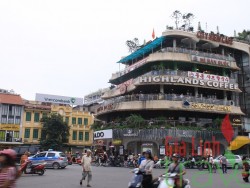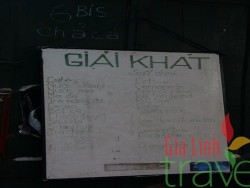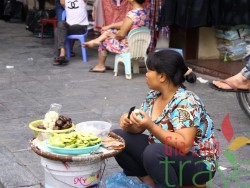Highland coffee
Food and Drink
Food and Drink


Drinks

Street food
Eating and drinking in Vietnam
Inside tourist areas, a wide range of food acceptable to the international palate are freely available, eating places are often clean and menus typically have English translations. Elsewhere, the range is much less, dishes and menus are often unrecognizable and preparation and eating areas are a great distance from international standards of hygiene. Having said that, few visitors seem undergo food-associated diseases during their stay!
Other than the most expensive institutions, hotel food is almost always provided as a buffet with a mixture of Asian and international dishes. Although the quality could also be good, the variety is usually unimaginative. Gia Linh Travel often leaves you to your personal gadgets within the evening so as to choose the type of food and level of restaurant that you just prefer.
We additionally offer an ‘eat avenue’ alternative in Hanoi, whereby you’ll be able to pattern the bewildering array of specialist pavement ‘cafés’. Our workers might be pleased to accompany you to the places where the locals eat – the food will be wholly authentic, scrumptious and cost a fraction of restaurant prices.
Don’t anticipate Western-style ‘hygiene’ although – however, we have taken loads of our company to ‘eat road’ without a single abdomen upset! On tours together with meals, we use the best available restaurants. In distant areas with out suitable eating places, picnic meals will be provided.
Food
Vietnamese food is usually nutritious and healthy. Cooking strategies are confined to grilling, frying, boiling and steaming, as ovens are usually not used. The staple is rice, either as grain or flour. The delicacies vary in accordance with the region. Within the north, it’s comparatively bland, with a robust Chinese language influence. Food in the Hue area is spicier, with some French touches. In the south, dishes with hot spices proliferate. Every area has its personal local specialties.
Drinks:
Vietnam has extensive variety of delicate drinks, starting from ‘Coke’ and ‘Pepsi’ produced here beneath license to locally produced fizzy drinks and ‘energy-boosting’ concoctions. Fruit juices are ubiquitous, ‘nuoc chanh’ (water, lemon juice and sugar) being very popular. Fresh orange juice and other sweet fruits are sometimes served with added sugar or salt – watch the person making it and stop them if necessary. Also very fashionable with visitors are fruit ‘shakes’: chopped fruit with ice, water and milk frothed up in a blender.
Vietnamese coffee is usually grown within the Central Highlands. Robusta is the standard selection served in Vietnamese institutions – black, thick, and very strong. The minority of Vietnamese individuals who drink coffee usually mix it with condensed milk – undoubtedly an acquired taste for many foreign visitors. Within the cities, smoother Arabica coffee and contemporary milk is changing into popular.
For Vietnamese coffee look for the sign ‘Trung Nguyen’ – they’re franchised cafés, very common throughout Vietnam. For Western-style coffee, go to the tourist areas.
A curious, and expensive, variety is ‘Weasel Coffee’. Arabica beans are fed to a weasel. They move although the animal’s digestive system, are excreted Whole, collected, and processed. The passage of the beans via the creature’s intestines is meant to create an extra mellow flavor.
Vietnamese tea is principally green, sometimes with flavorings, and drunk with out milk or sugar from small handle-less cups. This is the drink traditionally provided to folks visiting households, mates, offices, outlets and so on. Black tea can be popular, but drunk without milk. For those who want a standard cup of tea with milk, stick to the tourist areas – elsewhere you are more likely to find yourself with lukewarm water with a tea bag and condensed milk.
The range of alcoholic drinks in Vietnam is limited. Other than costly imported wines and spirits, most drinks available are domestically produced variations on rice wine, or lager-type beer. Rice wine is drunk neat, often direct from the fermentation jar through a bamboo straw, or distilled into a spirit, often mislabeled as ‘vodka’. The wine can be used as a base for the addition of vegetation, barks or animals. These are often drunk for their ‘medicinal’ purposes – snake wine is very fashionable with men who imagine it enhances virility.
Within the north, ‘medicinal’ wines and spirits can be discovered easily – definitely worth a tasting session. In Hanoi, there is a restaurant that specializes in fruit wines and liqueurs from the hill tribe villages – our workers might be happy to escort you and assist you to return to your hotel.
Beer comes as variations of locally-brewed French-style lager, and as ‘bias hoi’. Also referred to as ‘contemporary beer’, bia hoi is relatively low in alcohol, produced daily, and served ice-cold. It’s cheap, ubiquitous and scrumptious on a hot day!
